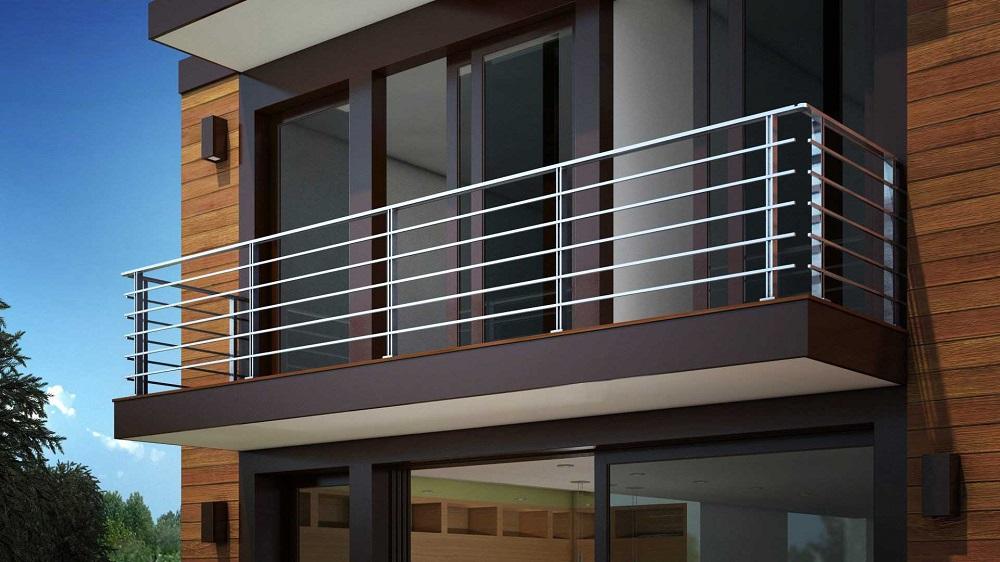Aluminum Railing: Railing systems serve an important purpose

Railing systems serve an important purpose - to provide safety and stability wherever needed. Whether installed at a residential property, commercial building or even on a pedestrian bridge, railings ensure security from dangers of falling or slipping. Over the years, aluminum has emerged as one of the most preferred materials for manufacturing railings owing to its lightweight yet durable characteristics. This article explores various aspects of aluminum railings including their construction, benefits, finishing options and uses.
Aluminum Railing - Material Properties
Aluminum is a versatile metal that is light in weight but extremely durable. It provides an excellent strength to weight ratio that makes aluminum railings much lighter than other alternatives like wood or steel. As a corrosion resistant material, aluminum does not rust even when exposed to water, salt or other harsh elements. This longevity reduces maintenance needs over time. Its malleable nature allows aluminum to be cast, formed or welded into intricate railings designs with ease. Combined with its attractive appearance, aluminum has become the go-to material for premium and aesthetically pleasing railing installations.
Construction and Design Options
Aluminum Railings can be fabricated using hollow tubing, solid rods or extrusions cut to the required dimensions. Posts are typically square or round tubes inserted firmly into the building structure using mounting plates or shoes. For strength and stability, posts are spaced at regular intervals as mandated by building codes. Horizontal and vertical rail elements interconnect the posts to form the railing pattern. Common designs include classic balustrade style, glass infills, cable or woven wire styles. Customizations allow integrating lighting, decorative cut-outs or welded art panels into the railing structure. Surface finishes further enhance aesthetic appeal.
Finishing Aluminum Railings
Several finish options are available to protect aluminum from corrosion and weathering while imparting a beautiful look. Powder coating is a popular choice that involves application of electrically charged powder onto the metal surface before baking to produce a durable colorfast finish. Anodizing is an electrolytic process that thickens the aluminum's natural oxide layer and can yield various shades. Stainless steel posts with aluminum infill panels also combine corrosion resistance with aesthetic differentiation. Paints and clear coats offer traditional painted aesthetics but require more maintenance over time. The right finish is chosen based on design intent, budget and required longevity.
Residential Railing Applications
Aluminum is a top choice for railings installed around residential properties like decks, balconies, stairs, windows and rooftop areas. Its lightweight construction allows easy installation even on older structures without requiring heavy-duty modifications. Homeowners prefer the low maintenance and long lasting finish of aluminum that retains an as-new look for many years with minimum upkeep. Popular residential railing styles replicate wood and metal looks seamlessly while eliminating concerns over wood rot, rust or termite damage common to other materials. Aluminum railings increase both safety and curb appeal of living spaces.
Commercial and Infrastructure Uses
Owing to qualities like corrosion resistance, strength and flexibility in fabrication, aluminum finds extensive use in railings for commercial facilities and infrastructure projects. Common commercial applications include railings encircling building perimeters, bridging walkways, surrounding rooftop gardens and amenity decks. Its lightweight ease of installation makes retrofitting of aluminum railings convenient even on older structures. Infrastructure projects where aluminum railing is installed include elevator shafts, stairs and ramps in large buildings, pedestrian overpasses and bridges. Special alloy variations sustain heavy duty usage in industrial facilities while retaining an as-new aesthetic.
Barrier Railing Designs
In addition to aesthetics, functionality is an important consideration while choosing railing designs. Barrier railings using aluminum perform a critical safety role. Example barrier designs include:
- Glass infill railings provide uninterrupted views while preventing falls through sturdy glass panels secured firmly within the frame.
- Cable or woven infill styles use tightly spaced wires or cords to function as effective barriers without blocking views.
- For locations with movement ofheavy objects, caged lattice or rigid infill panel designs barricade perimeter areas dependably.
- where children may be present, reduction of openings prevent hazards ensuring risk-free usage.
Custom Projects
With advancements in fabrication technology, design possibilities for aluminum railings have grown tremendously. Architects and contractors leverage capabilities like CNC machining, metal forming, welding and bending to translate even complex custom railing visions into reality flawlessly using aluminum. Examples include unique spiral stair railings, multi plane geometric patterns, fluid organic sculptural forms and integration of lighting elements. While readymade stock designs serve basic needs, custom aluminum railings endure as a statement design element enhancing the curb appeal and personality of structures.
As a material combining aesthetic finesse and engineering sturdiness, aluminum has revolutionized the railing industry. It preserves an as-new appearance propertiesyear after year with minimal upkeep costs. Whether for residential homes adding safety and value or large infrastructure serving heavy usage - aluminum railings satisfy both functional and aesthetic needs admirably. Advancements continue facilitating more innovative designs bridging art and technology. Finishing options allow customizing looks to match any surrounding decor seamlessly. Aluminum is undoubtedly the first choice for premium, long-lasting and easily installable railing installations.
For more Insights, Read –
https://www.insightprobing.com/aluminum-railing-trends-size-and-share-analysis/
- Art
- Causes
- Crafts
- Dance
- Drinks
- Film
- Fitness
- Food
- Spiele
- Gardening
- Health
- Startseite
- Literature
- Music
- Networking
- Andere
- Party
- Religion
- Shopping
- Sports
- Theater
- Wellness
- IT, Cloud, Software and Technology


